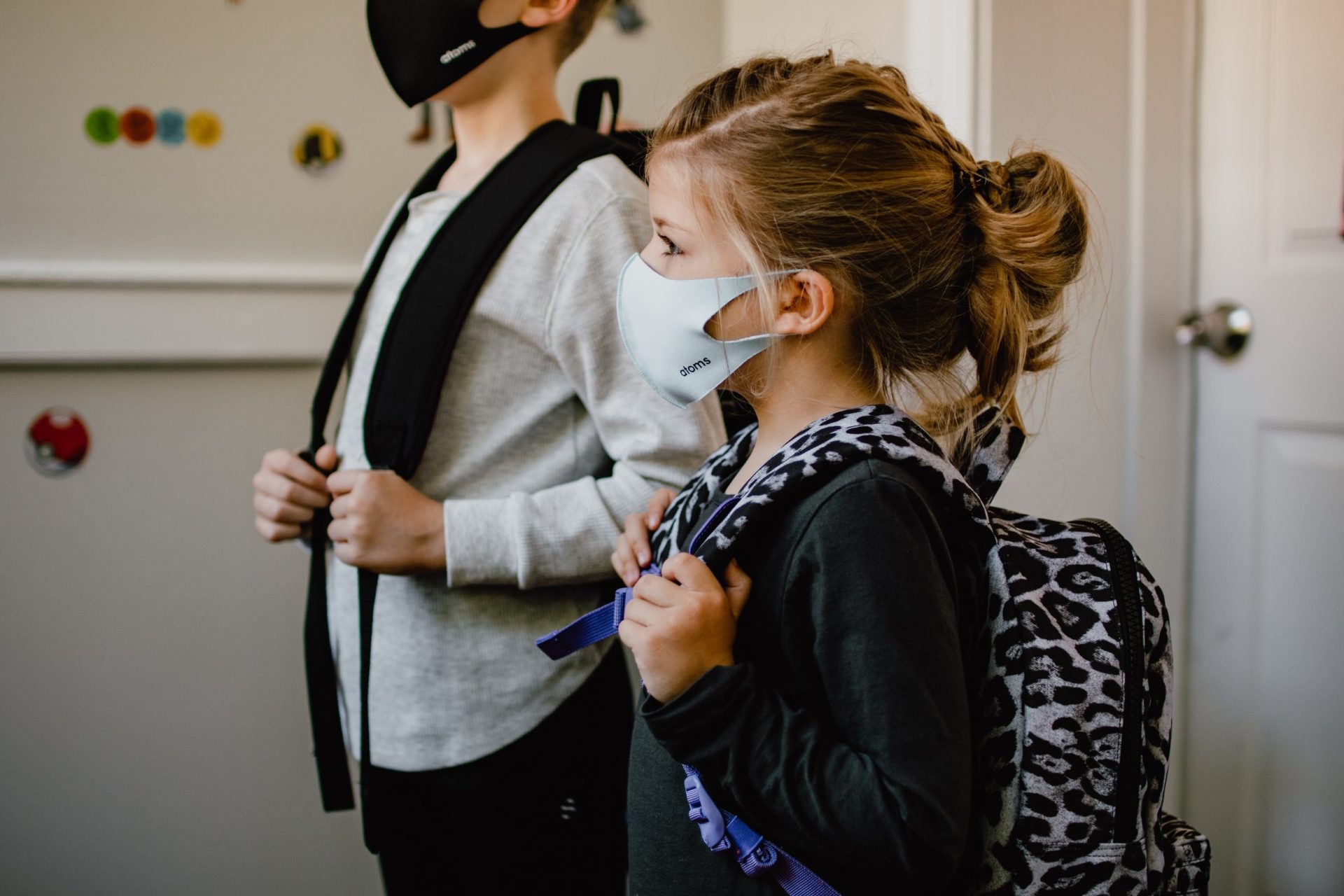
Unless a miraculous vaccine or drug appears, we will never eradicate the coronavirus. Mitigation have had a profound impact on the risk of infection and on the broader public health, but those mitigation efforts have come with profound societal and economic consequences. Now, as vaccines are widespread and effective drug treatments (including oral medications for COVID-19) have increased, we need to think about benefit and risk when making any policy decisions about COVID-19 and its impact on children, adults, and schools.
In the United States, COVID-19 is declining in many parts of the country, and in a recent interview, Dr. Anthony Fauci said he was “as confident as you can be” that most states would peak in Omicron cases by mid-February. In as little as a couple of weeks in many parts of the US, COVID-19 will be at low levels similar to most endemic respiratory viruses. Unless a new variant appears, the time is now to change how we manage our approach to the virus.
On January 20, 2022, 14 days after Omicron cases began to recede in the United Kingdom, the UK government lifted their mask mandates and vaccine passports throughout the country and no longer required high school students to wear masks in classrooms. This reflected an appropriate re-calibration of risk benefit of mitigation steps – one that focused on living with the virus.
It is time to shift our mentality too. Americans need a roadmap for balance and treating COVID-19 like one of many other common respiratory pathogens. In the next few weeks, we can anticipate that risk of acquiring infection during routine activities will reach low enough levels to justify a change in our approach.
Of all the demographics that need to return to some semblance of normalcy, the most important is undoubtedly our children. They have endured two years of hardship, lost learning, and blows to their emotional and physical health. They must resume interacting more normally with friends and teachers and make up for lost time.
Children have suffered significantly from pandemic restrictions despite being the lowest-risk population from the virus. The WHO defines health as a state of complete physical, mental and social well-being and not merely the absence of disease or infirmity. At this watershed moment, where the benefits of returning children to more usual school behaviors exceed their health risks, it’s time to meet children’s broad health needs.
School closures and restrictions, along with online learning, have resulted in most children still getting an education, but with widespread reduction in educational attainment and a rise in emotional, social, behavioral, and attention problems. These problems are magnified among minorities and the poor where school resources and access to technology are more limited. Twenty-five percent of children report depressive symptoms and 20 percent have symptoms of anxiety. In 2020, obesity rates skyrocketed. The incidence of eating disorders among adolescents and young adults increased 15.3 percent, and many outpatient eating disorder clinics have wait times as long as nine months or more.
In vaccinated kids, COVID-19 only rarely causes serious illness. Vaccination also protects kids from late manifestations of COVID-19 including MIS-C and likely long COVID. Importantly, vaccination protects children ages 5 and up from hospitalization and death. In unvaccinated children, mortality from COVID-19 is on par with that of pre-COVID-19 pandemic influenza. Every death is sad, but so too is the loss of potential and the mental and behavioral impacts we are witnessing linked to school restrictions result in loss of potential, education attainment, and years of lost life.
While more and more schools are now open, most are functioning far from normal. Asymptomatic testing continues to cause unnecessary school absences, and in many schools, children eat in silence and socially distance from their peers. These were needed policies during the surge, but as we come through to the other side, we must think about their negative consequences including children feeling more fearful or thinking they pose an unacceptable harm to others.
A hard truth is that we will never be able to eradicate COVID, but we can treat it like other illnesses. Like the flu, strep, or other ailments, we can mitigate its harms while appropriately meeting kids’ overarching needs. Pursuing balance to our mitigation efforts will address the significant mental and physical risks associated with COVID mitigation while not subjecting them and those that work with kids to a significant likelihood of harm. Vaccination and the occasional use of COVID drug treatments will protect adults and even some children from serious harm. A small number will be at risk for the consequences of infection, but the numbers will be low enough to justify the benefits to the remainder as we have always accepted with our other actions – like the flu, driving, and so much more.
Some of the mitigation strategies made sense through 2020 and during the Omicron surge. But to limit further harm to our children, it is important to plan rational, data-driven policies in schools as the Omicron surge subsides. Assuming cases continue to improve as they are, we propose six steps to return children to a new – and reasonably safe – state.
-
Focus efforts on vaccination for all eligible children and adults, particularly where vaccination rates are lowest due to issues of access to care, reduced vaccine confidence, and insufficient outreach. Vaccination efforts will soon include children down to the age of 6 months.
-
Continue to upgrade school ventilation systems. Dr. Joseph Allen and The Lancet COVID-19 Commission Task Force on Safe Work, Safe School and Safe Travel have described how improved ventilation can significantly reduce aerosols and airborne spread of the virus. This can be achieved through any combination of opening windows and doors, increasing ventilation rates in mechanically-ventilated buildings, using MERV-13 filters, and supplementing with portable air cleaners with HEPA filters.
-
We need to stop asymptomatic testing and contact tracing. The largest study of the test-to-stay strategy showed no meaningful impact of asymptomatic testing and tracing on community transmission. These data support the Children’s Hospital of Philadelphia’s Policy Lab’s recommendation to stop asymptomatic testing in schools.
-
Return children to norm
al lunchtime socializing. Free time is critical for children’s social, emotional, and interpersonal development. After two years of virtual schooling and social distancing, it’s time to nurture childhood friendships and strengthen the bonds of our school communities. -
In areas with high vaccination rates, remove mask mandates in schools when local COVID hospitalization rates are low – for example, under 10 per 100,000 population. Encourage those who desire or have been recommended by their medical team extra protection to wear well-fitted N95 or other filtered masks to optimally protect the wearer.
-
Scale-up mental health services and social supports in schools. Digging out from two years of trauma will require significant resources — from in-school counselors to support animals — to minimize the long-term impact on students’ mental and physical health.
It’s time for adults to lead the way forward and model confidence in the vaccine and our ability to reckon with risk. Teachers and staff must be safe and they can be as the number of cases decline to low levels, by being vaccinated and appropriate use of drug treatments of COVID. Let’s show children that we value their needs beyond simply not getting COVID. Their health and well-being depend on it.

Monica Gandhi
Dr. Monica Gandhi MD, MPH is Professor of Medicine and Associate Division Chief (Clinical Operations/ Education) of the Division of HIV, Infectious Diseases, and Global Medicine at UCSF/ San Francisco General Hospital. She also serves as the Director of the UCSF Center for AIDS Research (CFAR) and the Medical director of the HIV Clinic at SFGH (“Ward 86”).

Daniel Johnson
Dr. Daniel Johnson is Professor of Pediatrics at the University of Chicago Medicine, in the Department of Pediatrics where he serves as Vice Chair for Clinical Services, Section Chief of Academic Pediatrics and Interim Section Chief for Pediatric Infectious Diseases.






